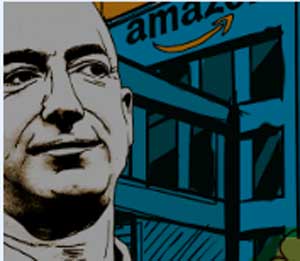Amazon has received much scrutiny and criticism from various media, workers’s rights organization and former employees over its tracking of worker productivity as measured against allegedly far too demanding standards.
Supply Chain Digest Says... |
|
|
The criticism is to an extent unfair, as while Amazon may have taken the practice to some new levels, the use of detailed productivity tracking in distribution has been around for decades, long before Amazon, and is in broad use today in hundreds of companies.
In fact, a whole category of software, Labor Management Systems (LMS) is available to track productivity against standards from a number of companies.
All that said, what Amazon is doing with video monitoring of fulfillment center workers – and monitoring of human analysts of that video - is a little creepy.
According to an excellent article this week on the verge.com web site, video cameras are trained on many if not nearly all Amazon FC workers every minute they are on the job.
What for? The AI-based cameras, for example, can usually tell if a picker (in this case, a stationary worker who is fed work on mobile robots constantly arriving at each pick station) has placed the wrong SKU into a shipping container or tote.
But for a variety of reasons, the camera can’t determine if the correct product was picked or put, after which the video file strangely is sent to offshore employees for manual view and determination. Picking accuracy is a key target for reviewers, but they also look for workers taking too long to do the task, while some look to see if other types of workers are correctly following Amazon COVID protocols, such as distancing.
The apparent goal, according to The Verge: provide data that can be used by the cameras machine learning tools to reduce the percent of videos that the camera software cannot figure out what happened.
This is worth the cost and effort? Amazon must think so.
But the crux of The Verge article is that the video reviewers work in sweat shop conditions as bad if not worse that the Amazon FCs are alleged to have – and at very low pay on top of that in places such as India and Costa Rica. Indian reviewers said they earn about $300 per month on average, while the Costa Rican average was $843.
The videos last between two seconds and two minutes, and reviewers said they usually view thousands of them per day.
Ironically, the reviewers themselves are subject to detailed performance scrutiny, achieved in part through with real-time analytics. The reviewers must also maintain an accuracy rate for their conclusions of between 95% to 99.5%
(See More Below)
|
CATEGORY SPONSOR: SOFTEON |
|
|
| |
|
|
 “While they decide how to categorize a video, a timer on their screen counts how long they take. If they linger too long, their “TAKT” time — the average time to get through a video — will increase, and they may be subject to retraining, disciplinary processes, or even face losing their job," The Verge reports. “While they decide how to categorize a video, a timer on their screen counts how long they take. If they linger too long, their “TAKT” time — the average time to get through a video — will increase, and they may be subject to retraining, disciplinary processes, or even face losing their job," The Verge reports.
The Bureau of Investigative Journalism interviewed 21 current and former video reviewers, information used for The Verge article.
Some of the interviewees reported physical problems, including headaches, eye pain, and deterioration in their eyesight. They said they were made to hit almost impossibly viewing targets, with Amazon tracking any periods of inactivity outside of designated break times.
Amazon reviewed a draft of The Verge article, leading Steve Kelly to dispute a number of the allegations in this story. He said that both the Bureau and Verge had “selected a handful of anecdotes to paint a misleading picture, and we do not believe they represent the vast majority of our team.”
Do you have any thoughts on this whole crazy stoty? Let us know your thoughts at the Feedback button below (email) or in the Feedback section.
|